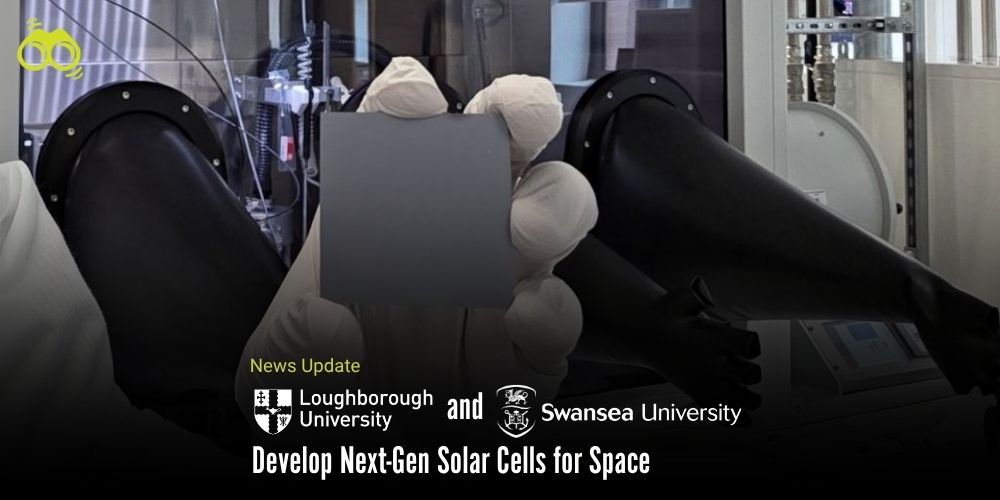New Solar Cell Technology Set to Boost UK Role in Global Space Sector
UK Scientists Target Space Energy Revolution with Ultra-Light Solar Panels
Solar cells, also known as photovoltaic (PV) cells, generate electricity by converting sunlight into energy through the photovoltaic effect. This clean and renewable energy source powers a wide range of terrestrial systems and is becoming increasingly vital for satellites and space missions. According to the U.S. Department of Energy, the sunlight that reaches Earth in just 90 minutes could meet the planet’s energy needs for an entire year. In space, where sunlight is more intense and uninterrupted, the potential for solar energy is even greater. However, current technologies such as multi-junction solar cells, while highly efficient, remain costly, heavy, and complex to manufacture.
To address these limitations, Loughborough and Swansea universities are collaborating on the development of cadmium telluride (CdTe) solar cells on ultra-thin glass. This innovative technology is designed to be lighter, more cost-effective, and more resistant to radiation than existing systems. Supported by UKRI EPSRC funding, the project builds upon earlier trials conducted aboard the AlSat-Nano CubeSat and aims to achieve 20% efficiency in orbit. With the European Space Agency forecasting a dramatic increase in solar power demand, from 1 MWp to 10 GWp annually by 2035, this breakthrough could significantly reshape energy generation for satellites, space-based manufacturing, and deep-space exploration. The UK space sector, currently valued at £17.5 billion, stands to benefit considerably from this growth, particularly as satellite constellations such as Starlink expand and space-based production of semiconductors and fibre optics accelerates.
At present, space missions primarily rely on multi-junction or silicon-based solar cells. Although these technologies offer high efficiency, they are expensive and difficult to scale. In contrast, the CdTe-on-glass solution—already tested in low Earth orbit, has demonstrated 23.1% efficiency in terrestrial trials and is engineered for durability and performance in space. Professor Michael Walls of Loughborough University emphasised that reducing payload weight is essential for lowering launch costs. The team’s approach involves depositing thin-film solar cells directly onto protective cover glass, thereby creating a more robust and efficient power source for extended missions. The three-year project draws on advanced research infrastructure, including Swansea’s Centre for Integrative Semiconductor Materials (CISM), which houses systems such as the AIXTRON CCS MOCVD, and Loughborough’s National Facility for High-Resolution Cathodoluminescence Analysis.
Professor Paul Meredith, Director of CISM, noted that the centre is expanding into space technologies through its Space Semi-Tech Foundry, having previously focused on clean energy and healthcare semiconductors. He highlighted that this collaboration addresses a critical need and aligns with the UK’s strategic ambitions. The CdTe technology offers higher specific power, longer operational lifespans in space, and significantly reduced costs, making it well-suited for the next generation of space missions. The project is further strengthened by the involvement of six international industry partners from the UK, Germany, and Canada, who are contributing technical expertise and in-kind support valued at £112,000. These include 5N Plus Inc., AIXTRON, CTF Solar GmbH, Teledyne Qioptiq, the Manufacturing Technology Centre, and Satellite Applications. This pioneering collaboration positions the UK at the forefront of space-based solar innovation, with the potential to redefine how future missions are powered.
Editor’s Note
The collaboration between Loughborough and Swansea universities represents more than an academic partnership; it’s a strategic leap towards redefining how humanity powers its ambitions beyond Earth. As satellite constellations grow and deep-space missions expand, our reliance on efficient, lightweight, and scalable energy systems will only deepen. This project’s focus on cadmium telluride (CdTe) solar cells on ultra-thin glass has the potential to disrupt the status quo of space energy technology. What sets this initiative apart is its pragmatic vision: to reduce launch costs, increase durability in space, and offer an alternative to the complexity and expense of traditional multi-junction solar cells. Backed by robust UKRI EPSRC funding, world-class research tools, and international industry partners, it exemplifies the kind of cross-sector innovation the UK must continue to champion.
Skoobuzz believes that this groundbreaking project, if successful, will not only reinforce the UK’s leadership in space technology but also help democratise access to orbit by making power more accessible, scalable, and affordable for future missions.














0 Comments (Please Login To Continue)